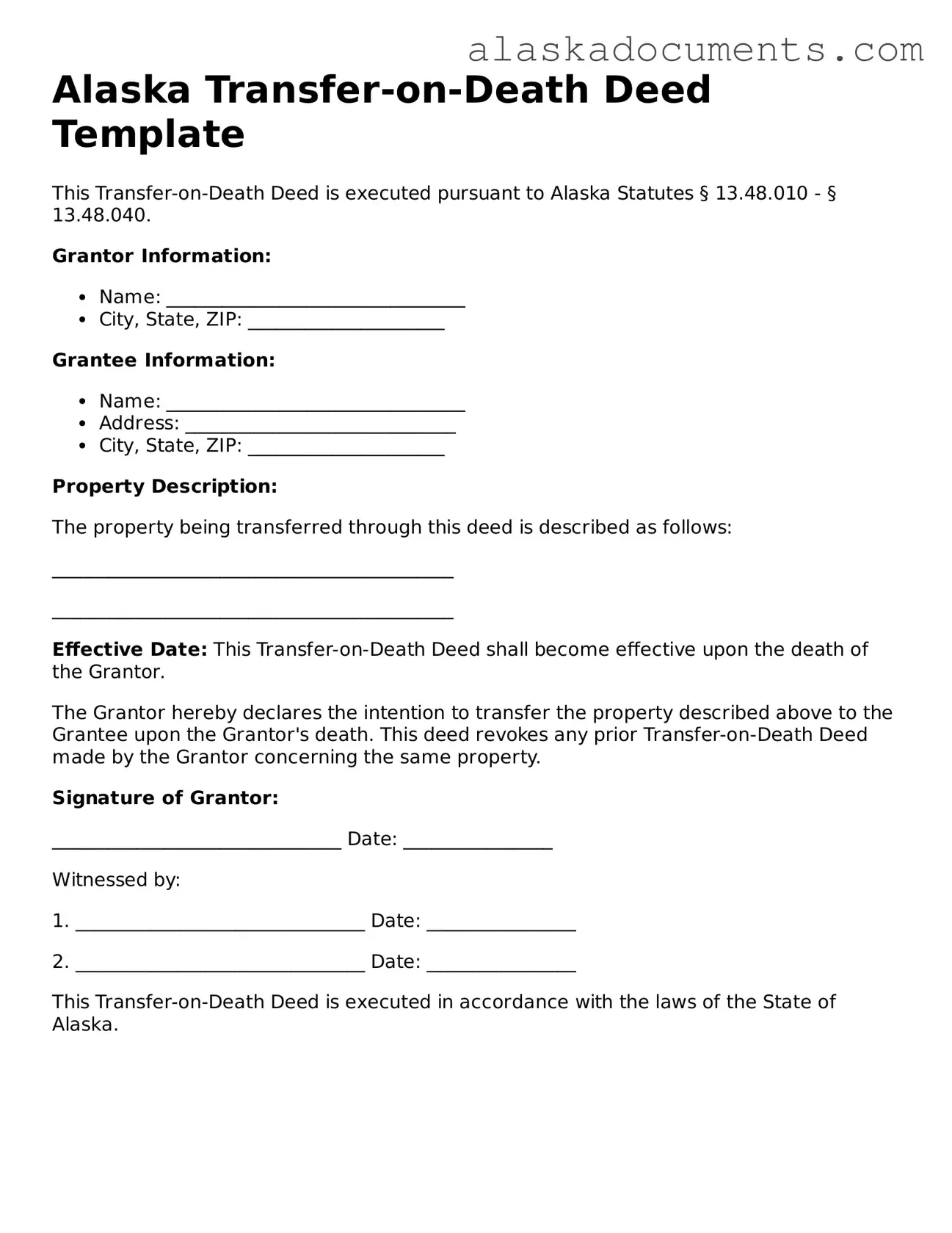Alaska Transfer-on-Death Deed Template
This Transfer-on-Death Deed is executed pursuant to Alaska Statutes § 13.48.010 - § 13.48.040.
Grantor Information:
- Name: ________________________________
- City, State, ZIP: _____________________
Grantee Information:
- Name: ________________________________
- Address: _____________________________
- City, State, ZIP: _____________________
Property Description:
The property being transferred through this deed is described as follows:
___________________________________________
___________________________________________
Effective Date: This Transfer-on-Death Deed shall become effective upon the death of the Grantor.
The Grantor hereby declares the intention to transfer the property described above to the Grantee upon the Grantor's death. This deed revokes any prior Transfer-on-Death Deed made by the Grantor concerning the same property.
Signature of Grantor:
_______________________________ Date: ________________
Witnessed by:
1. _______________________________ Date: ________________
2. _______________________________ Date: ________________
This Transfer-on-Death Deed is executed in accordance with the laws of the State of Alaska.
